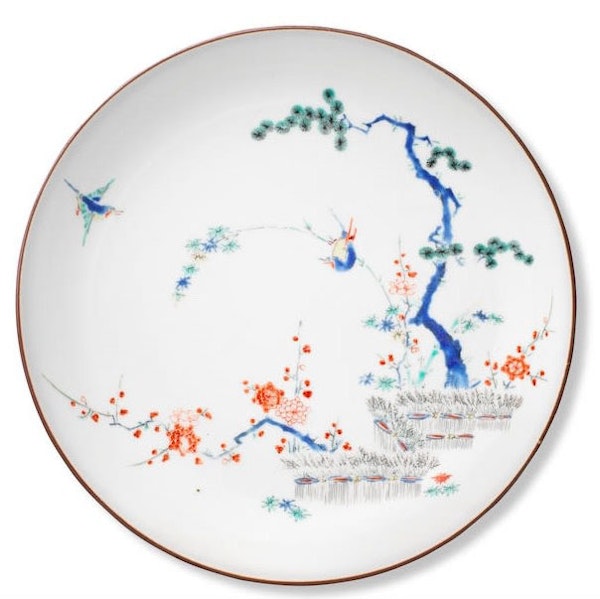A JAPANESE ‘KAKIEMON’ DISH, EDO PERIOD (1603 - 1868), C.1700
A JAPANESE ‘KAKIEMON’ DISH, EDO PERIOD (1603 - 1868), C.1700
POA
Description
Of shallow rounded form with a brown-edged rim, brightly enameled in blue, turquoise and red enamels and gilt, with the 'Kakiemon' pattern of two birds, one flying and one perched, surrounded by pine, prunus and bamboo (together known as the 'Three Friends of Winter'), all issuing from a triple-banded hedge, all within a brown-glazed rim, the base glazed.
LITERATURE
Footnote: Variations of this popular design are illustrated in Asahi Shinbunsha Seibu Honsha Kikakubu, Kakiemon no sekai: Genryu kara gendai made (The World of Kakiemon from Its Origins to the Present), Fukuoka, Asahi Shinbunsha Seibu Honsha Kikakubu, 1983, p.83, no.99; Oliver Impey, Japanese Export Porcelain, Catalogue of the Collection of the Ashmolean Museum, Oxford, Amsterdam, Hotei Publishing, 2002, p.160, no.235.
Together, the 'Three Friends of Winter' ('suihan sanyou'), pine, bamboo and prunus, are a symbol of longevity, perseverance and integrity, which are the ideal virtues of the scholar-gentleman. As they flourish in winter, they also symbolise flourishing under adverse conditions. They are also associated with the three main religions of China, Buddhism, Daoism, and Confucianism.
| item details | |
|---|---|
| Origin | Japanese |
| Period | 18th Century |
| Diameter | 21cm; 8 ¼ ins. |
Product REF: BF62


